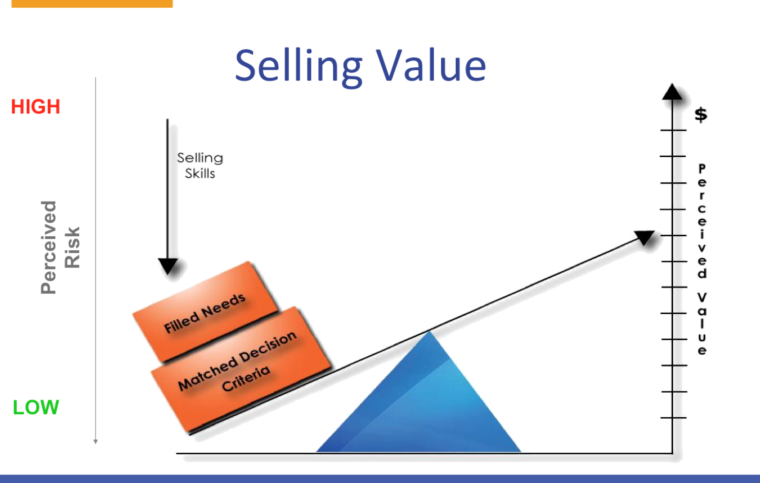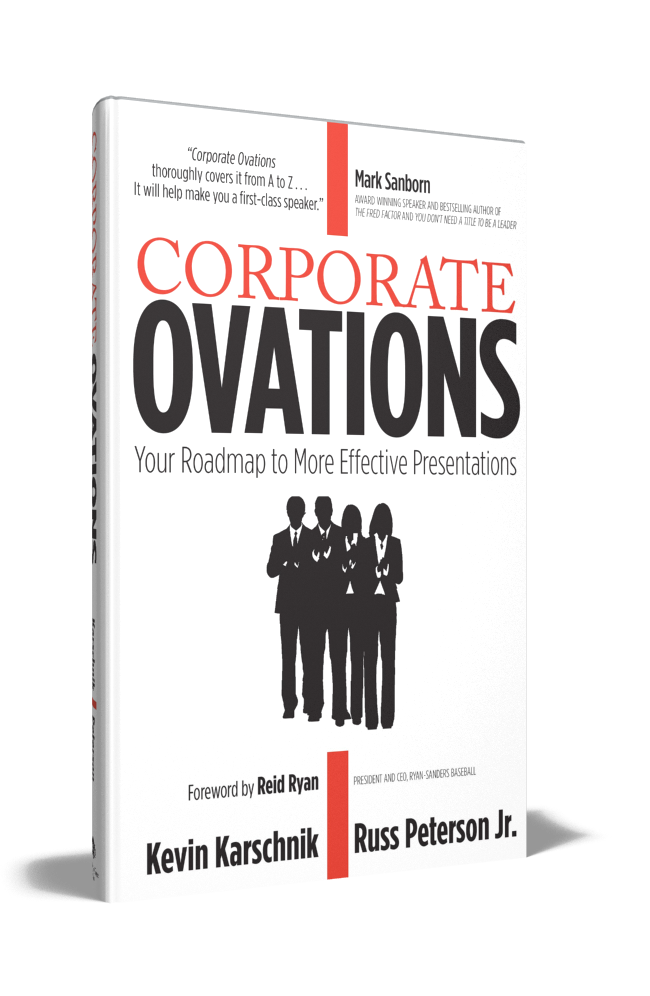I flew to Dallas for a meeting with my new boss. As a Business Development Manager I would be negotiating contracts for the company so I asked him about negotiating prices. He glared back at me and gave a direct response, “We don’t sell on price here! We sell on value!”

Now, I didn’t disagree with him. I just wanted to know if I could negotiate pricing at all or if I would need him to approve any type of pricing concession. But now he created a bigger question for me… “How does he (my manager) define value?” So I asked him. He gave me a political answer (i.e. talked for 15 minutes and never really answered my question.) So I had to go on a quest to define value for myself.
I found it. When you’re in professional selling, you’ve got to know what makes up value to your customer. Value is just three simple pieces…
1. Fill their Business Need
All prospects are looking for something to satisfy a business need. Don’t think of this as “What do they want to order?” but rather think of it as, “What will my product or service solve for them?” Businesses are always changing to improve themselves. They are making changes to either lower costs or increase revenues. Ultimately, that’s what it comes down to for them. If they are talking to you about a product or service, ultimately it is tied to a business objective they have for their company.
- Find out what their true business need is before you prescribe any solution
- Their business need is different from what they want to order from you
2. Align with their Decision Criteria
Every decision made is based on a set of criteria. Even when you decide which blazer to wear to a meeting, you will think through a set of criteria before you pick: That one looks good with these slacks, the weather looks cool today, and I like the slim fit look.
Your customers select a provider based on a set of criteria and price is always one of them, but it’s not the only criteria. Most of us don’t have unlimited funds, so pricing has to be considered. But we also look at brand, warranty, reputation, delivery, availability, aesthetics, etc.
- Ask your prospect how they will decide between you and your competitors?
- If they give you several criteria they will consider, ask them to rank them by importance.
- When you present your solution, make sure you show how your solution aligns
3. Be a Professional
The final piece of value is found in you. It is how you communicate and interact with them. You’ve heard this before, “People buy from people they like.” I disagree. I think people buy from people they trust. And, if they trust you, chances are they probably like you too.
If it came down to selecting between two vendors, both are equal on satisfying the business need and all of the decision criteria, then the buyer will look to something else to be the tie breaker. If you followed up on all meetings and action items, sent meeting invites, agendas, and meeting minutes; if you consistently met all expectations on timelines and deliverables, but the other vendor dropped the ball several times… the vendor is going to pick you. You’d do the same thing.
- Always set expectations, communicate them, and then meet or beat them
- Treat every customer with respect
- Communicate, communicate, communicate!
Here’s the added bonus…
When these three elements are strong, the perceived value to your customer goes up. In addition to that, the perceived RISK of going with your solution goes DOWN! Here’s why that is so critical to a salesperson. The final phase a buyer will go through before saying yes is a justification of the risk. They want to review all information and know, beyond any doubt, they are making the right decision for their organization (and for their own future!) They are weighing the risks of saying yes.
If the perceived risk of going with your solution is low, they are more likely to say yes. Closing the deal becomes the logical next step in the process and the prospect will close the sale for you!
Which part of the value formula do you think is the toughest?
(post your comments below)
Now go create some value for your prospects!
Russ
Let’s connect on Twitter if we haven’t already?
Not a Twitter user? Then let’s connect on LinkedIn.
Not a LinkedIn user? Let’s connect via my Facebook page!
Don’t use Facebook either? Sign up for my weekly Blog Post delivered to your email.
Want Sales Training for your Team?
Visit iSpeak’s website for a list of workshops and descriptions.
iSpeak is the winner of FOUR American Business Awards for our Sales Training Programs.
Sales Books I truly enjoyed:
The NEW Strategic Selling, by Robert B. Miller and Stephen E. Herman
Hope is Not a Strategy, by Rick Page
Solution Selling, by Michael Bosworth
 I collected over 80 quotes that give me inspiration as a salesperson and leader. I hope they bring you some inspiration as well. Get my FREE eBook on Sales and Leadership Inspiration.
I collected over 80 quotes that give me inspiration as a salesperson and leader. I hope they bring you some inspiration as well. Get my FREE eBook on Sales and Leadership Inspiration.
Russ Peterson Jr. is the co-founder and Managing Director of iSpeak, Inc. – An award-winning professional development training company. Russ is a speaker, international trainer, and published author on Professional Sales Communication and Business Communication. He delivers workshops, keynotes, and personal communication coaching services to business professionals in the US and around the world. You can connect with Russ directly through Twitter, Facebook and LinkedIn.



Please note: I reserve the right to delete comments that are offensive or off-topic.